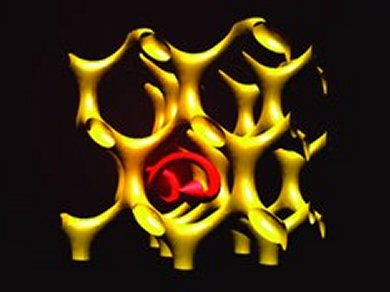Metamaterials are artificial materials engineered to have properties that are not found in nature. They have opened the door to revolutionary effects in light–matter interactions, such as negative refractive indices. Their properties depend on the sub-wavelength structure of the material, i.e., features smaller than the wavelength of visible light are needed for optical properties. Metamaterials can be assembled through colloidal self-organization, but these materials only have feature sizes above several hundreds of nanometers. Metamaterials in the higher optical frequencies have remained elusive.
Ullrich Steiner and co-workers, University of Cambridge, UK, have produced the first 3D metamaterial that exhibits optical properties across the visible region. They incorporated a continuous metal phase into a block copolymer scaffold by selectively etching the polymer blocks and backfilling with gold. This material has features on the 10-nm length scale and the dimension of the full unit cell is ≈ 50 nm. This is far below optical wavelengths, which gives rise to its optical properties, including orientation-dependent color under linearly polarized incident light and optical chirality.
Image: © Wiley-VCH
- A 3D Optical Metamaterial Made by Self-Assembly
S. Vignolini, N. A. Yufa, P. S. Cunha, S. Guldin, I. Rushkin, M. Stefik, K. Hur, U. Wiesner, J. J. Baumberg, U. Steiner,
Adv. Mater. 2011.
DOI: 10.1002/adma.201103610



